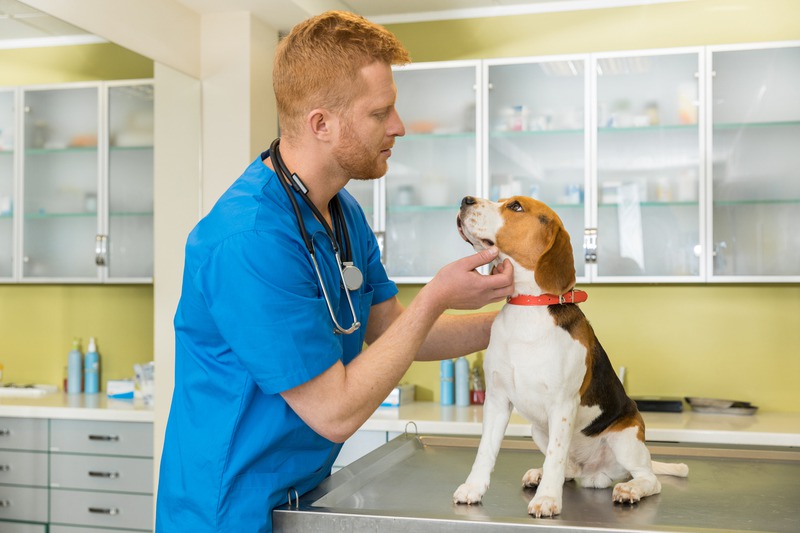As a pet owner, you often know what your pet needs—like walks, food, or hugs. But knowing if their skin is healthy can be hard. Pets can get skin problems just like people, such as allergies and infections. Knowing when to get their skin checked by a vet is important for their health. We’ll explain when your pet should see the vet for their skin, what the vet will do, and how to care for your pet’s skin at home within 80 simple words.
Spotting the Signs of Skin Trouble
Your pet can’t tell you when it’s feeling under the weather, especially when it’s something that might seem minor, like itchy skin. It’s our job to be vigilant and spot the signs. Here are some tell-tale symptoms that indicate it’s time to book a dermatological exam for your pet:
-
Excessive scratching, licking, or biting: If your pet is constantly going at their skin, there might be an underlying issue.
-
Bald patches or hair loss: Apart from normal shedding, any unusual hair loss could be a cry for help.
-
Redness or inflammation: These can be signs of irritation or allergy.
-
Unpleasant skin odor: This might suggest a yeast or bacterial infection.
-
Dry, flaky skin or dandruff: A sign that your pet’s skin isn’t as healthy as it should be.
-
Sores or hot spots: Open wounds can be a gateway to more serious infections.
-
Changes in skin texture or color: Anything out of the ordinary is worth having checked out.
Don’t wait for these symptoms to resolve themselves or grow worse; they can be indications of allergies, parasites, or infections that require professional attention.
What Is the Role of a Dermatologist for Pets
When we talk about skin care for pets, a pet dermatologist is a specialist you might be referred to. These professionals are wizards when it comes to diagnosing and treating skin, hair, ear, and nail conditions in animals. They’ve got the know-how to get to the root of persistent problems that might be baffling your regular vet.
A dermatological exam goes beyond a visual inspection. The pet dermatologist might take skin scrapings, perform allergy testing, or even suggest more advanced diagnostic methods if needed. They’re equipped to offer various treatments that can provide relief and healing, from medicated shampoos to allergy shots.
When a Regular Vet Visit Turns into a Referral
During a standard check-up, your regular vet will examine your pet’s skin and coat. If they find something concerning, they may refer you to a vet surgeon or a pet dermatologist for more specialized care. This isn’t something to be worried about; it’s just an extra step to ensure your pet gets the best possible treatment.
It’s also good to note that while vets can handle many common skin problems, specialized knowledge may be necessary for ongoing or complex conditions. So, if your vet suggests it, take their advice seriously.
What to Expect During the Exam
Once you’ve got an appointment for a dermatological exam, you might wonder what’s in store for your pet. Here’s a quick rundown:
-
Medical history review: Be prepared to answer questions about your pet’s symptoms, diet, environment, and previous health issues.
-
Physical exam: The dermatologist will give your pet a thorough once-over, paying special attention to their skin.
-
Diagnostic tests: These could include skin scrapings, cultures, biopsies, or blood tests.
This comprehensive approach helps the dermatologist pinpoint the issue and craft a personalized treatment plan for your pet.
Why are Pet Vaccinations Important
While we’re on the topic of pet health, let’s touch on an important preventative measure: dog vaccinations. Staying up-to-date with vaccinations is key to protecting your pooch from various diseases, some of which can affect skin health. Diseases like canine distemper can lead to secondary skin infections, highlighting the significant role vaccinations play in overall wellness.
Shots should be part of your pet care routine. They are a shield against health issues that could escalate into bigger problems, and yes, that includes potentially avoiding unnecessary skin complications. Your vet can guide you through the necessary vaccinations and the best schedule for your pet.
Home Care Tips for Healthy Pet Skin
Aside from professional care, there’s lot you can do at home to maintain your pet’s skin health. Here are some proactive steps:
-
Regular grooming: Brushing and bathing your pet helps to keep their skin clean and healthy.
-
Healthy diet: Nutritious food contributes to a strong skin barrier.
-
Parasite prevention: Stay on top of flea and tick treatments to prevent itchy bites and infections.
-
Monitor for allergies: Be aware of any adverse reactions to foods or environmental factors.
These simple measures are potent in preventing many skin issues and keeping your pet comfortable.
Final Thoughts
Our pet’s skin health is a vital aspect of their overall care. Ignoring skin issues can lead to discomfort and more serious health concerns. By recognizing the signs that it’s time for a dermatological exam, understanding when to seek specialized care, and keeping up with preventive measures like vaccinations, you’re setting the stage for a happy, healthy pet. Remember to trust your instincts – if something doesn’t look or feel right on your pet’s skin, it’s always best to consult with your vet. Together, we can ensure our furry friends get the care they deserve.


